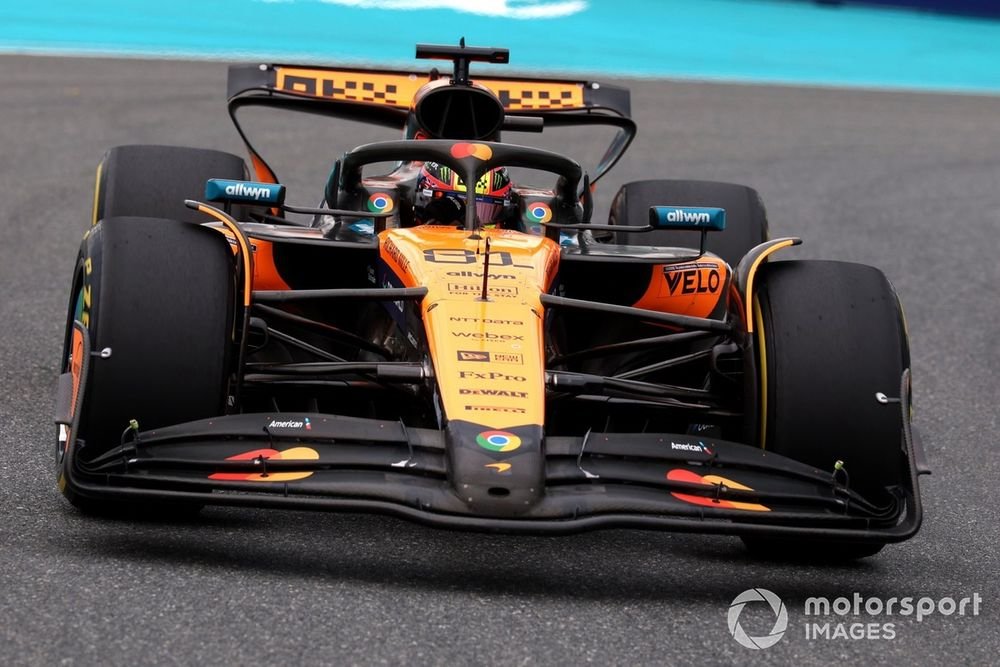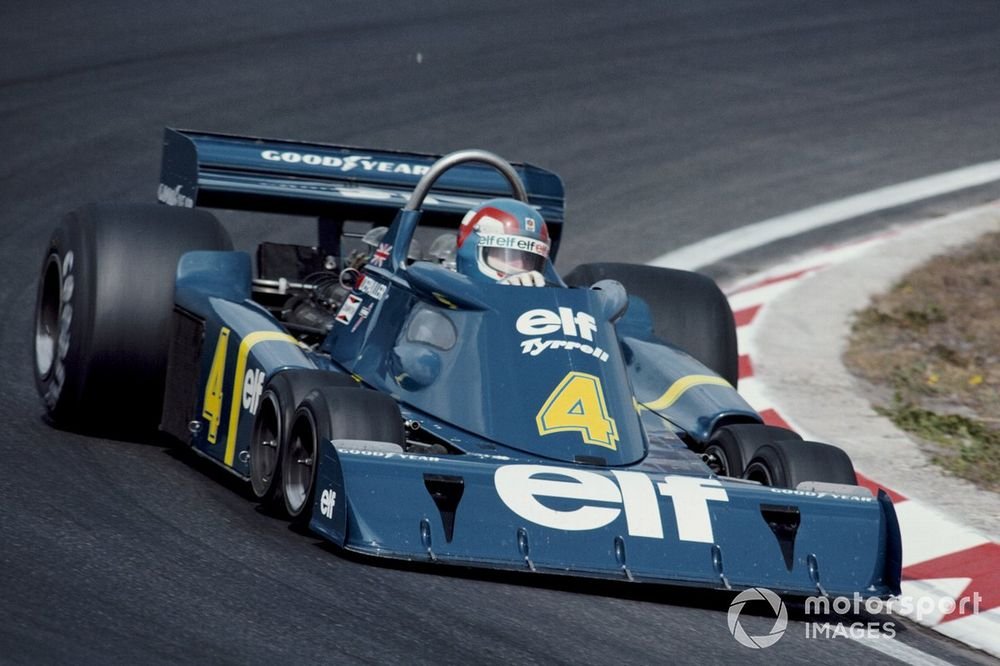Siegfried and Roy have nothing on Tom Patton. They train their white tigers through relentless repetition, and so does Tom. It takes them forever to get their tigers to obey commands, as it does Tom. But once they get these animals tamed, Siegfried and Roy–as well as Tom–can put their beasts through their paces and wow the crowds.
Doin’ the Shag
In the summer of 1979, Tom bought yet another Tiger. It didn’t have an engine, and the front end was crumpled. It was painted a sickly green, and green shag carpet covered the dash. None of this mattered, because Tom could see the possibilities. Although neither Tiger nor owner knew it at the time, a 20-year training and development program had started. Before too long, the street-Tigers were sold to finance the racing effort.
When Tom acid dipped the Tiger, he discovered it had been well used. He found Bondo an inch thick in some body panels, and learned that somewhere along the line, the car had acquired an Alpine front end. But from the firewall back, the unibody was solid ·and clean.
To stiffen the tub for the track, he welded every seam he could find. Then he welded in a roll cage, installed a fuel cell and bolted on a set of American Libre wheels. Since Production-class rules were restrictive and not much go-fast equipment was available for Tigers, Tom’s first race Setup came from what he had learnee while autocrossing. Once the pieces were back in place, he painted the Tiger Wimbledon White with blue stripes, a paint scheme that remains today. Tom attended his first SCCA driver’s school in the spring of 1980.
He quickly learned that racing an 86-inchwheelbase roadster powered with a big VS was like, well, taming a tiger. For the first couple of years, he gained driving experience and tweaked the Tiger for more speed and better handling while running regional races. In those days, the Tiger was classed in C Production and ran against cars like the Jaguar XKE, Mazda RX-7, Datsun Z-car and Porsche 914-6.
It didn’t take him long to see the disadvantages of running an “orphan” car against these factory-backed, well-developed race cars. With no manufacturer to turn to for advice and equipment, he knew that if the Tiger was going to be competitive, he would have to develop it on his own. And he wasn’t an engineer, so the development was going to be a slow process of “what works and what doesn’t.” There was always the pinch of a tight racing budget, since he and Janet were funding this project themselves.
Tom first qualified for the national Runoffs in 1982, but chose not to compete until 1983, when he finished 15th. In the early years, he found the Tiger tough to drive fast consistently, despite his efforts to drive smoothly. Working through the handling and reliability problems, he continued to improve, making the Runoffs each year and slowly creeping up the finishing order. Still, there were times when he questioned the wisdom of sticking with the Tiger, as his competitors were now often running purpose-built cars with factory backing and readily-available speed equipment.
SCCA rule changes–which moved the faster Production cars over to the GT category–and a crash or two began to help. After the Tiger’s front end was destroyed in a 1982 crash, he replaced it with a tube frame front end, now allowed under GT2 rules. Later he did the same with the rear. These changes allowed Tom to mount a coil-over suspension and larger wheels and tires. These improvements resulted in improved Runoffs finishes during the late ’80s, but the Tiger was still a handful to drive.
Back to Square One
Tom calls 1990 a “crossover” year. After he drove his heart out to finish 11th at the Runoffs, he was fed up with fighting the Tiger and ready to take the next step. He came to the conclusion that it wasn’t his driving; the car just wouldn’t handle.
Finally he decided to eek professional help. Just two weeks after the Runoffs, he brought the Tiger to Craig Carter, a noted chassis tuner in Marion, Ind. Tom says that he got his first inkling of what was in store when they rolled the Tiger off the trailer and into Carter’s garage. As they pushed, Craig’s first question was, “How do you drive this -?” Craig then told Tom that the “front end was screwed up; the middle was screwed up, and the rear end was screwed up.”
Once that was settled, Craig put the car on his surface plate and started from scratch. Since he had built several Trans-Am racers, he developed drawings for the Tiger based on a ¾-scale T-A car. He balanced the corners, determined the right suspension pick-up points, and set the ride height. He pulled out the Tiger’s steering rack, replaced it with a Woodward rack, and redesigned the steering geometry. He replaced the welded rear end with a Detroit Locker. And that was just the start. When he finished, he gave Tom six more pages of things to do over the winter.
After all this work, Tom started the next season with high expectations. He found, however, that with the chassis finally set up the way it should be, he had to learn how to drive the Tiger all over again. He found he could no longer dirt-track the car through the corners; he had to drive through corners and wait longer to get on the gas. The Ellison Engine Service VS had always made plenty of horsepower, but now Tom felt that he could make better use of it. The Tiger’s bodywork also got more aggressive, as Tom developed the next generation of fiberglass panels to provide easy access and cover the bigger tires.
As Tom and the Tiger got faster, the next few years produced more podium finishes at the Runoffs, including third twice and second three times. But for a coil wire that separated in mid-race while Tom was leading in 1997, he might have won that year. And then there was 1998, when he came together with a competitor while passing for the lead. Despite a spin, he finished second yet again.
Even after 20 years of development, the Tiger is not what you would call high-tech. It still retains most of the original factory tub, which has required some modification and repairs after a couple of bad crashes. Rules require a 289- cubic-inch Ford small block with cast-iron heads while lim.iting carburetor size to 600 cfm—early ’60s technology at its best.
Tom runs a four-speed, Jerico-modified Ford Top Loader transmission and a Speedway Engineering quick-change rear end. The rear end rolls on Wilwood wide-five hubs, whose bolt pattern allows more wheel choices at lower prices. Not a lot of technical advances compared to, say, a purpose-built, tube-frame Toyota Celica. And forget the big bucks support: Tom still does nearly all the work himself, and on many race weekends only Janet provides crew duties.
1999: Year of the Tiger
This brings us up to 1999. The Tiger had a great season, winning six out of eight National races, finishing fourth once, and getting one DNF due to a broken valve. Tom handily won the Central Division championship (the eighth year in a row) and felt this could be his year for the national championship. Next to Indianapolis Raceway Park, Tom considers Mid-Ohio his home track and has run many miles on the course, which rewards a car with lots of torque like the Tiger. When qualifying rolled around, Tom was ready. He placed the Tiger on the outside pole, second only to a Nissan 300ZX which set a class track record to gain the top spot.
Race day dawned cool and cloudy, and by the time the GT2 race rolled around, it was threatening rain. The polesitter took them around for a fast stai1, which was exactly what Tom had hoped for. When the green flag dropped, the Tiger was on the cam_ in second gear and out-dragged the field into Turn 6. After that, he simply motored away.
While four competitors were exchanging paint–and more–for second place, Tom was savoring every lap. “It was pulling so good and handling so well, I wanted to make it last,” he said. Afraid to ease up even with the big lead, he kept the hammer down. “I knew someone would get clear in that battle for second and hunt me down like a dog, so I ran as hard as I could,” he said. And while the Tiger may not be high-tech, it still has the motor to ‘hustle down the Mid-Ohio back straight at 152 mph.
On his 15th try for the championship, Tom won the race by nearly 15 seconds. Janet shed a few tears of joy. It was a popular win, cheered on by a host of throwback Tiger supporters and other enthusiasts who favor “orphan” cars, especially when they sound like a Tiger. Then there’s also the fact that this win marks the Tiger’s first SCCA national title, 32 years after Sunbeam stopped making the car. As one of the Speedvision commentators remarked when talking about manufacturers’ contingency awards, “What’s Tom going to win, a toaster?”
After 20 hard years of taming the Tiger, even Siegfried and Roy could be proud. To say nothing of grandma.













Leave a Reply